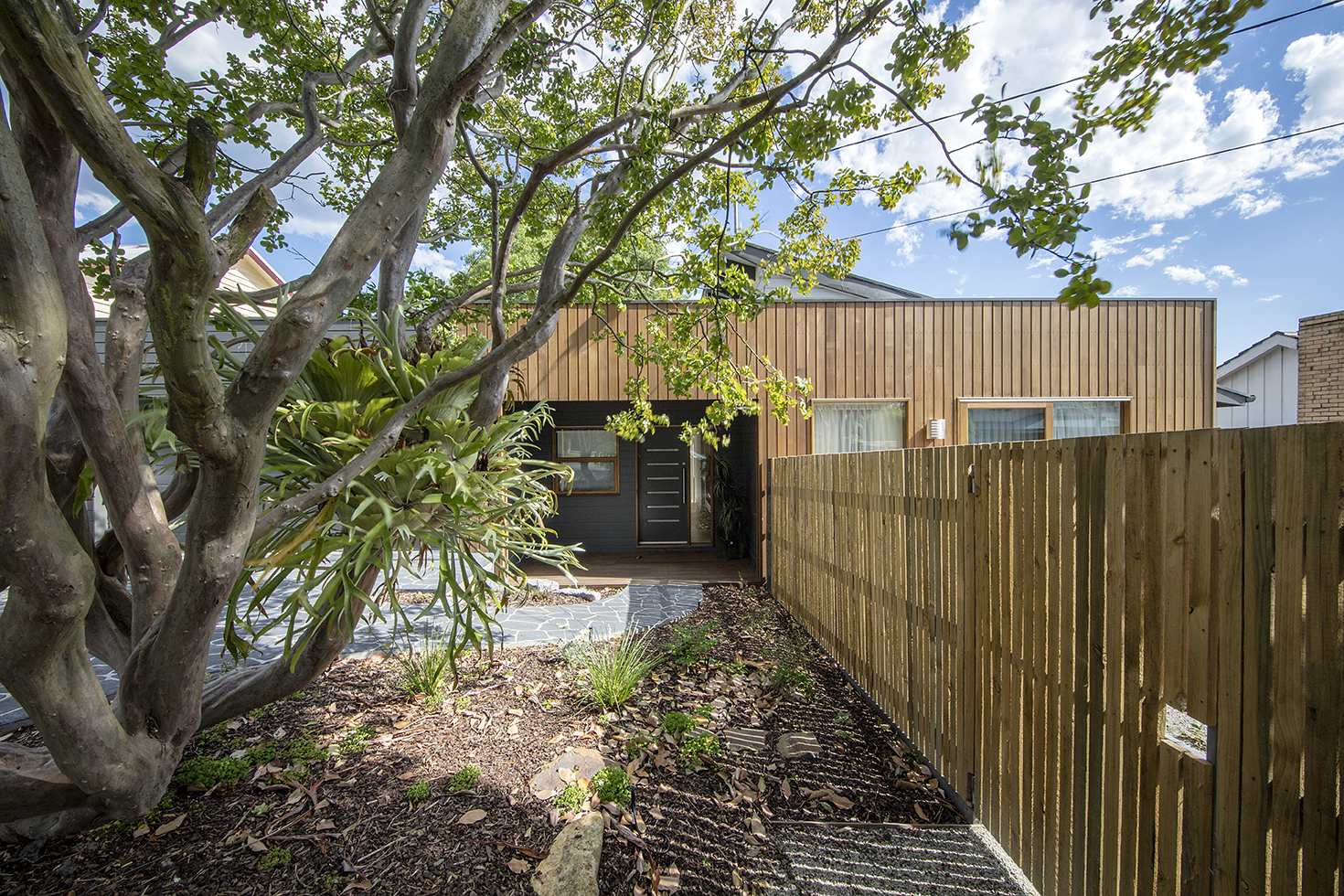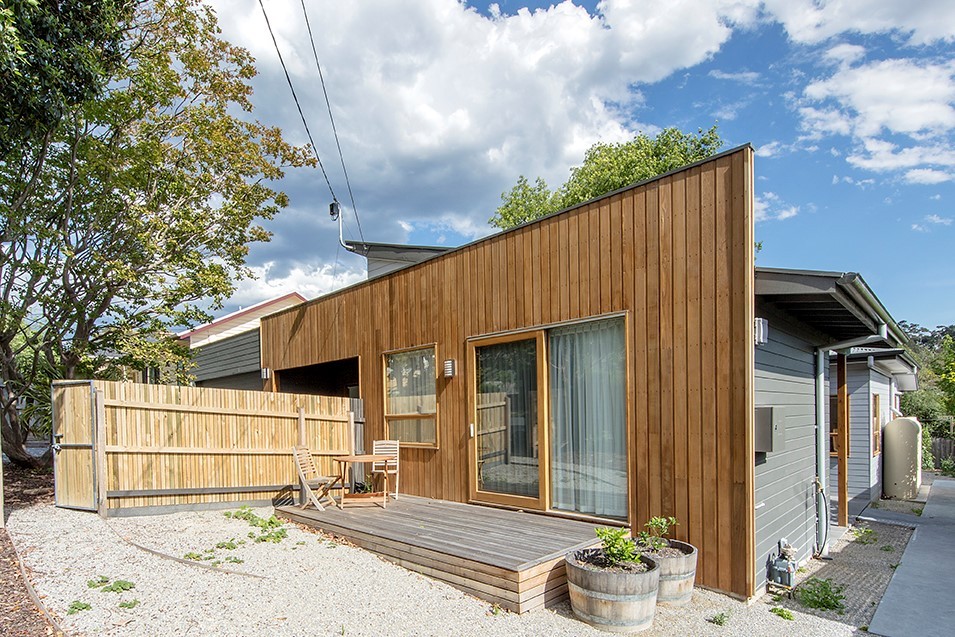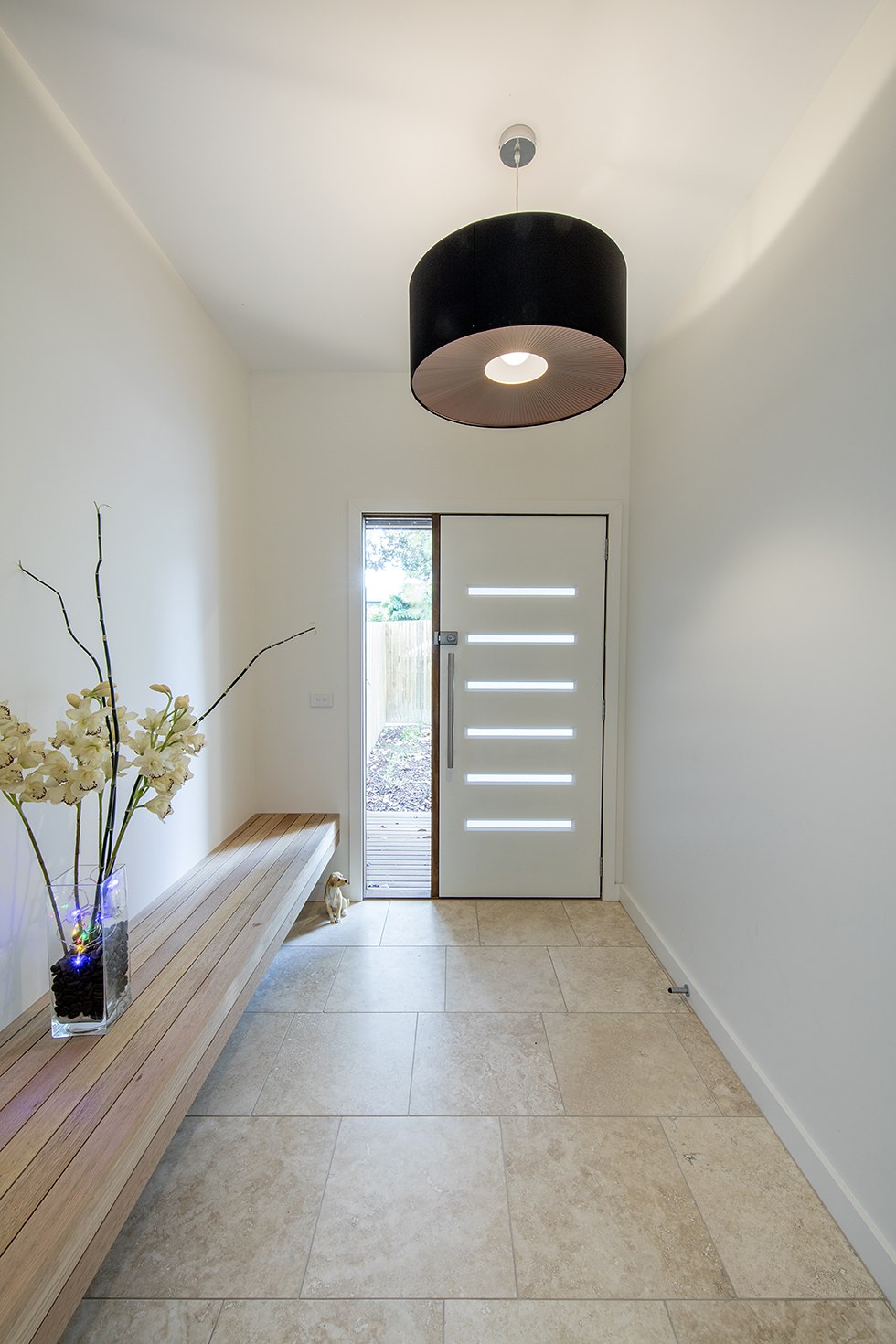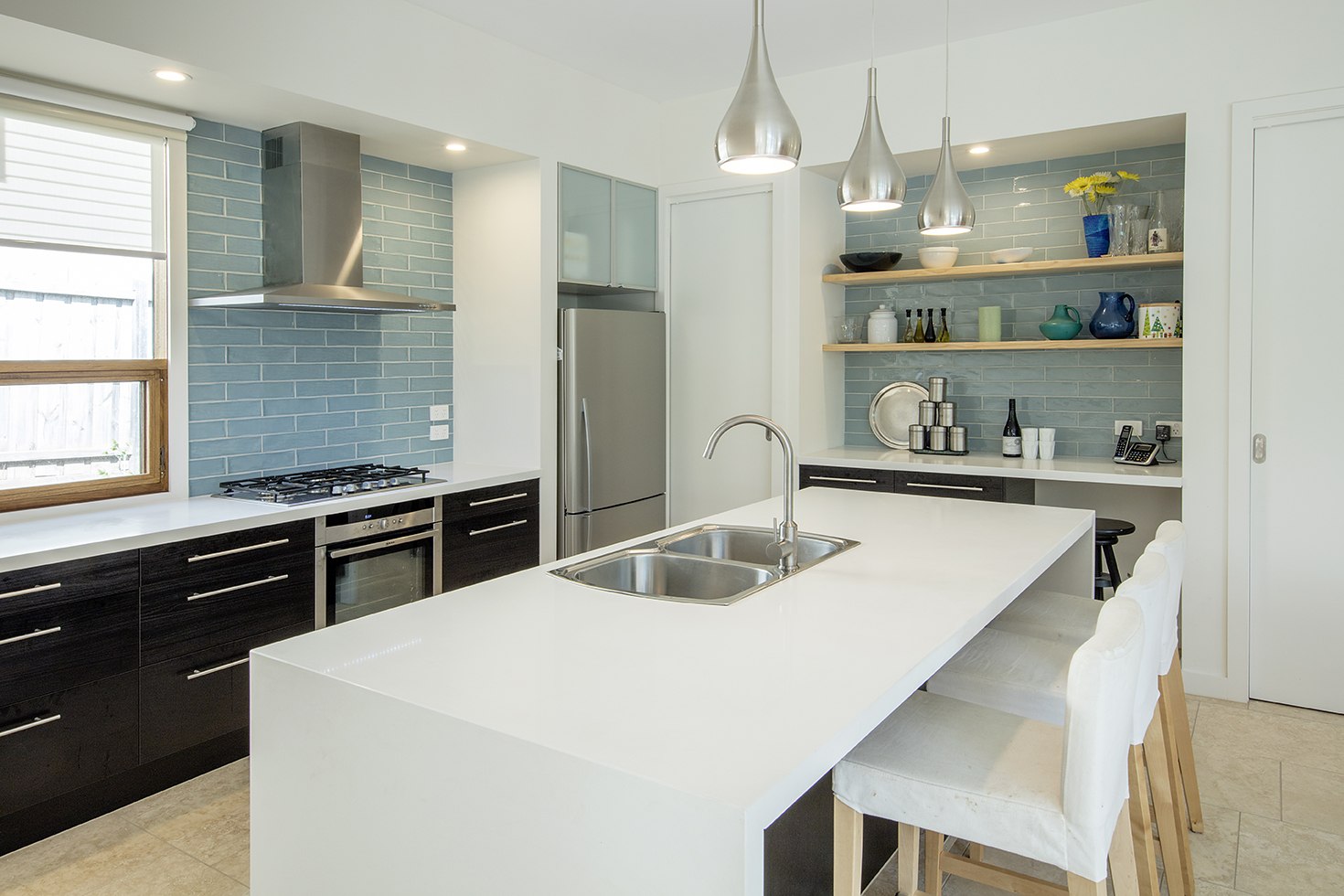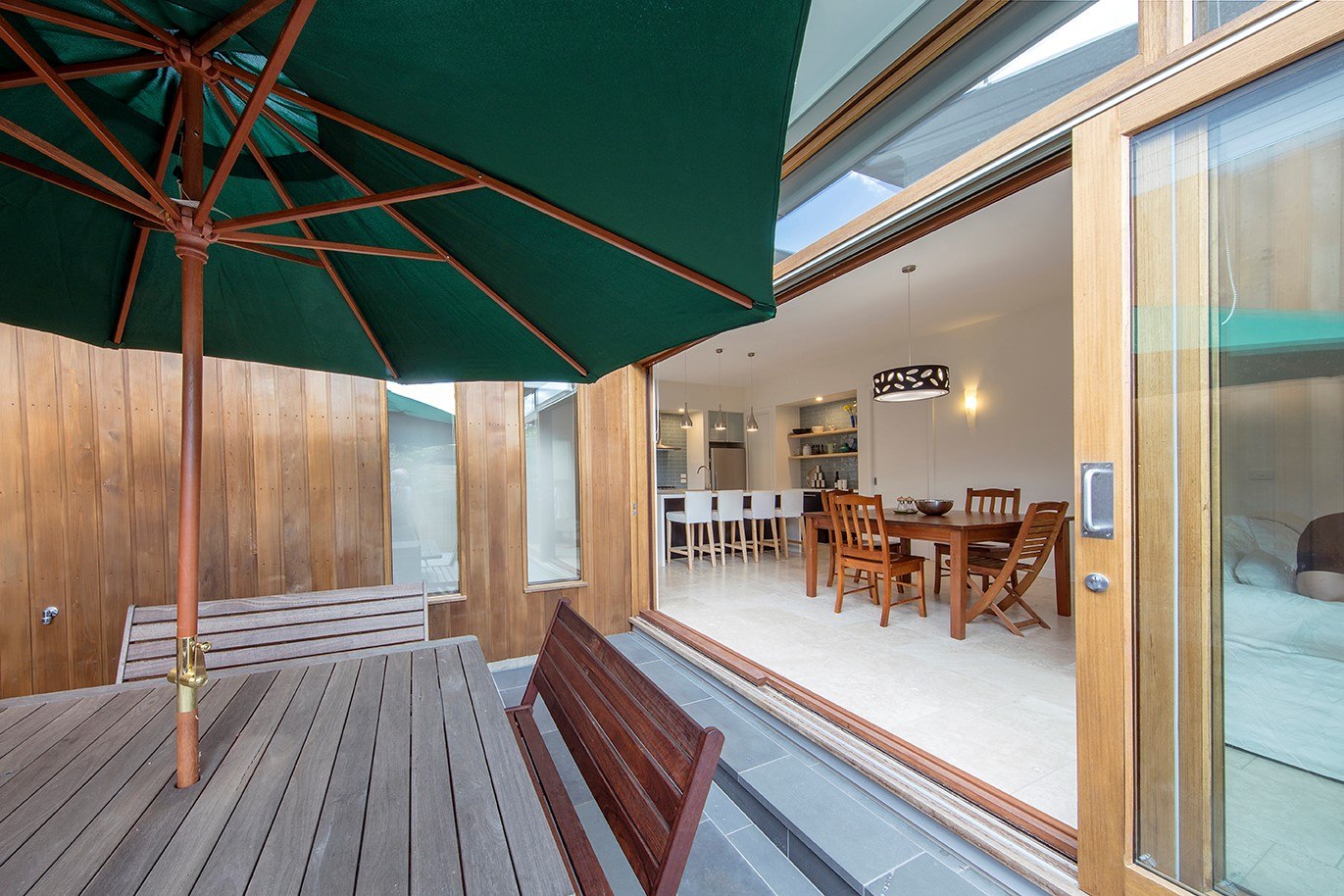Strategies for a New House with Poor Orientation
The owner had been living for many years in the poorly insulated house sitting on a south-facing slope and with a south-facing backyard. This was indeed a recipe for freezing cold winters. While summers were not scorching, there was not much cool relief due to the lack of thermal mass and insulation. Our assessment was that the embodied energy present in the existing home was not significant enough to justify its retention. Indeed, a new design catering to the specific property orientation would drastically reduce heating and cooling costs and provide increased comfort levels. The new house achieved a 7.5* energy rating which is a successful outcome for a property with challenging orientation. This compares to the old house which rating was between 1* and 1.5*.
Key facts.
Service provided: Design, Permits, Building Contract Administration
Project type: New home
Property location: Maroondah City Council
Land size: 697sqm
Proposed floor area: 196 sqm (18 squares) including 35 sqm garage.
The new design.
Orientation
As the owner preferred to retain a single level design, we decided to use the solar frontage at street level and introduce an inner courtyard at the rear to recreate another such frontage and illuminate the living areas. This strategy provides natural light and sun to the living areas while giving them a level of privacy that would be difficult to create at the front. The sunny front bedroom was designed as a roomy accommodation for the owner’s live-in mum while the few steps between this front level and the rear were designed to accommodate a wheelchair ramp should the need arise. The whole house sits on a concrete slab which gracefully harvests energy from the winter sun while remaining shaded and cool in summer.
Functionality and aesthetics
A clear floor plan allows for easy movement inside and minimizes circulation areas. The front façade features a minimal design clad in sustainably harvested hardwood finished with a natural oil.
Heating
In-slab hydronic was installed in the whole house, providing gentle heating in all rooms at low running costs thanks to the generous amount of insulation and an energy-efficient boiler. Floors were carefully insulated to ensure the heating responds quickly to thermostatic settings without unnecessarily heating slab footings.
Insulation
The concrete slab edge is insulated to minimize heat loss. Walls are insulated to R2.5 and an R6.0 combination of formaldehyde-free insulation and reflective sarking is installed in the roof. Double-glazing units with 12mm gap and Argon gas filling, and thorough drafts proofing to all windows.
Ventilation and shading
The south-facing TV room door funnels cooling breezes all the way up to the front door. Windows located on the East and West facades open to harvest same and feature glazing designed to reject incoming radiant heat.
Conservation
The old house was demolished selectively and individual components collected by relevant recyclers. The concrete slab uses recycled aggregates and part of its cement, which has high carbon emissions, is replaced with inert fly-ash. New walls and roofs use either solid or laminated sections of plantation pine.
Indoor air quality
Low-VOC (Volatile Organic Compounds) water-based glues and finishes for walls, floors and timber were used throughout.
Water
Taps and shower heads are WELS 5-star rated. The rainwater tank supplies garden taps, toilets and washing machine.
Wiring
Measures were taken to minimize damaging indoor electro-magnetic radiation (EMR).
